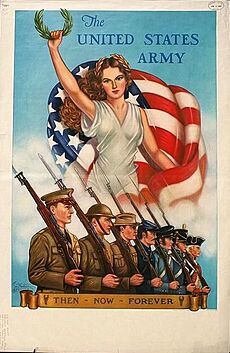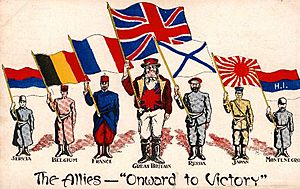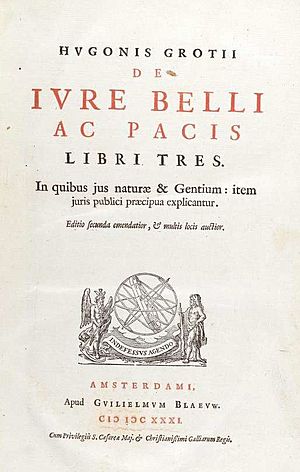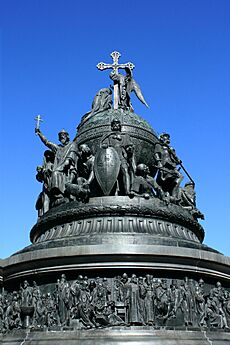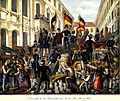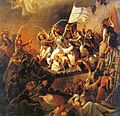Nationalism facts for kids
Nationalism is the idea that people who share a common culture, language, or history—a "nation"—should have their own independent country, or "state." It's a powerful force that can bring people together and shape the world.
As a movement, nationalism works to protect the interests of a particular nation. A major goal is often to gain or keep control over its own land, which is called sovereignty. This means the nation can govern itself without outside interference. Nationalism suggests that a nation is the best basis for a country and that political power should come from the people of that nation.
Nationalism also aims to build a single national identity. This identity is based on shared things like culture, language, religion, traditions, and a common history. There are different ways to define a "nation," which leads to different types of nationalism, such as ethnic nationalism and civic nationalism.
People have different views on nationalism. It can be a positive force, leading to movements for freedom, cultural revivals, and pride in a country's achievements. However, it can also be negative. It has been used to divide people, harm minority groups, and start wars, including being a major cause of both world wars.
Contents
What is Nationalism?
The main idea of nationalism is that a nation and a state should belong together. A nation is a group of people with a shared identity. A state is the land and government of a country. Nationalism is the belief that every nation should have its own state.
For example, people who feel they are part of the "French nation" should live in the state of "France." This creates what is called a nation-state.
The words "nation" and "nationalism" became common in the 1800s. Before then, people were usually more loyal to their local lord, city, or king than to a whole country.
The History of Nationalism
While people have always felt connected to their homes and communities, the idea of nationalism as we know it is more modern. Most historians believe it became a major force in the late 1700s and early 1800s.
Two key events that sparked modern nationalism were the American Revolution (1775–1783) and the French Revolution (1789). These revolutions were based on the idea of popular sovereignty, which means that the people themselves should have the power to rule, not kings or queens.
Scholars have different theories about how nationalism started:
- Some believe nations are very old and have always existed in some form.
- Others think nationalism is a modern idea. They say it grew because of big changes like the Industrial Revolution, the growth of cities, and the spread of education. These changes helped people feel connected to others they had never met, creating "imagined communities."
- Another idea is that nationalism is built on shared symbols, myths, and traditions that connect people to their past.
The 1800s: The Age of Nationalism
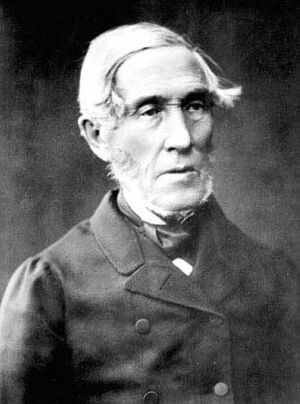
The 1800s are often called the "Age of Nationalism." During this century, nationalism became one of the most powerful forces in the world. It led to the creation of new countries and was a major cause of conflicts, including World War I.
The conquests of Napoleon Bonaparte across Europe in the early 1800s played a big role. As he took over different lands, people began to feel a stronger sense of their own national identity and a desire to rule themselves. This led to movements for unity in places like Germany and Italy.
Nationalism Around the World
France
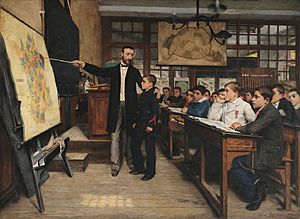
Nationalism in France grew strong during the French Revolution. The new government called on all citizens to defend the country. This created a powerful sense of national unity.
Later, after France lost a war to Germany in 1871 and had to give up the territory of Alsace-Lorraine, French nationalism became focused on revenge. This idea, known as Revanchism, was a powerful feeling of wanting to get back lost land that was seen as belonging to the nation.
Germany
In the early 1800s, the area we now call Germany was a collection of many small states. Napoleon's invasion helped spark a feeling of a shared German identity. Nationalists wanted to unite all these states into one powerful country.
The Prussian leader Otto von Bismarck made this happen. He led Prussia in several successful wars that inspired pan-German feelings. In 1871, the German Empire was created, uniting the German states into a single nation.
Italy
Like Germany, the Italian peninsula was divided into many small states for centuries. In the 1800s, a movement called the Risorgimento (meaning "Resurgence") began. Its goal was to unite all of Italy into one country.
Led by figures like Giuseppe Garibaldi, this nationalist movement was successful. In 1861, the Kingdom of Italy was formed, bringing the different states together.
Latin America
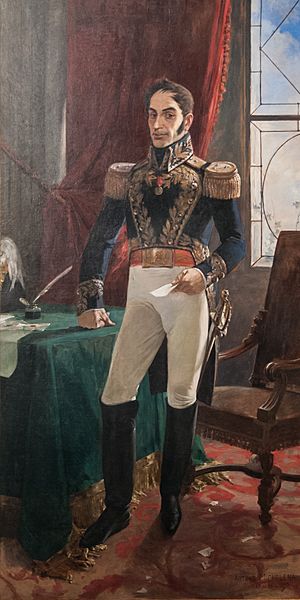
In the early 1800s, a wave of nationalism swept through Latin America. Most of this region was part of the Spanish Empire. But people born in the Americas, known as creoles, began to want independence from Spain.
Led by heroes like Simón Bolívar, many colonies fought and won their freedom. By 1826, Spain had lost almost all of its American colonies, and new independent nations were born.
Russia
In the 1800s, the official motto of the Russian Empire was "Orthodoxy, Autocracy, and Nationality." This meant loyalty to the Orthodox Christian Church, the Tsar (emperor), and the Russian nation.
A movement called Pan-Slavism also became popular. This was the idea that all Slavic peoples in Eastern Europe should be united, with Russia as their leader and protector. This idea fueled many of Russia's wars against the Ottoman Empire.
Jewish Nationalism
For centuries, Jewish people faced prejudice, known as antisemitism, in many parts of the world. In the late 1800s, some Jews came to believe that the only way to be safe was to have their own nation.
This movement became known as Zionism. Its goal was to create a Jewish homeland in Palestine, the ancient land of the Jewish people. After many years of effort and migration, the state of Israel was founded in 1948.
Africa
In the late 1800s, European powers colonized almost all of Africa. After World War II, African nationalism grew much stronger. Educated Africans began to organize movements to demand independence.
During the 1950s and 1960s, most African colonies became independent nations. In South Africa, a different kind of nationalism, led by the white Afrikaner minority, created a system of racial separation called apartheid. This ended in 1994 when Nelson Mandela became the first president in a multiracial election.
Types of Nationalism
Nationalism can take many different forms. The two most common types are civic nationalism and ethnic nationalism.
Civic Nationalism
Civic nationalism is based on the idea that a nation is a community of people who choose to live together under shared laws and values. It doesn't matter what their ancestry or culture is.
In a civic nation, people are united by their citizenship, their belief in freedom and equality, and their loyalty to the state. Countries like the United States and France are often seen as examples of civic nationalism, as their identity is based on political ideas rather than a single ethnic group.
Ethnic Nationalism
Ethnic nationalism defines the nation based on a shared heritage. This usually includes a common language, faith, culture, and ethnic ancestry.
In this view, what makes you part of the nation is not your choice, but your background. People are connected by the culture they share with their ancestors. Many nationalist movements in the 1800s and 1900s, especially in Central and Eastern Europe, were based on ethnic nationalism.
Anti-Colonial Nationalism
This type of nationalism developed in places that were ruled by foreign powers, such as the colonies in Africa and Asia. The main goal was to gain independence and end colonial rule.
Leaders of these movements worked to unite people from different tribes or groups against the colonial power. They imagined a new, independent homeland free from outside control.
Nationalism in Sports
International sports events, like the FIFA World Cup and the Olympic Games, are a powerful way that people express national pride. When national teams compete, fans around the world feel a strong connection to their country.
Sports can bring people together and create a sense of unity. Cheering for a national team can make people feel proud of their identity and part of a larger community. This shows how nationalism can be a part of everyday life, not just politics.
Related pages
Images for kids
-
People protesting in Vienna with German flags in May 1848.
-
Adolf Hitler being greeted by a crowd in Sudetenland in May 1938.
-
People cheering as Giuseppe Garibaldi enters Naples in 1860.
-
The Greek War of Independence began in 1821, with Greek revolutionaries fighting against the Ottoman Empire.
-
A map showing the Breakup of Yugoslavia into several new countries.
-
Kenneth Kaunda, a leader who fought against colonial rule in Zambia, at a rally in 1960.
-
Changes in national borders in countries that were once part of the Soviet Union or Yugoslavia, after the revolutions of 1989.
-
Brazilian President Jair Bolsonaro with United States President Donald Trump.
-
A crowd protesting against Britain in Cairo on October 23, 1951, during a disagreement over the Suez Canal and Anglo-Egyptian Sudan.
-
Ukrainian nationalists carrying flags and pictures of Stepan Bandera in Kiev.
-
A wall painting in Caracas with a message against American influence and imperialism.
See also
 In Spanish: Nacionalismo para niños
In Spanish: Nacionalismo para niños


